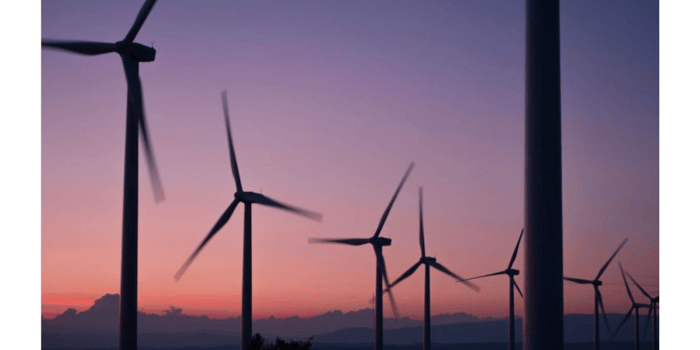Update of IEA’s landmark Net Zero Roadmap shows greater ambition and implementation, supported by stronger international cooperation, will be critical to reach climate goals


INSIGHT by the International Energy Agency (IEA)
Driving greenhouse gas emissions from the world’s energy sector to net zero and limiting global warming to 1.5 °C remains possible due to the record growth of key clean energy technologies, though momentum needs to increase rapidly in many areas, according to a new edition of the IEA’s landmark Net Zero Roadmap.
The new Roadmap sets out a global pathway to keep the 1.5 °C goal in reach, providing a comprehensive update to the groundbreaking original report that was published in 2021 and has served as an essential benchmark for policy makers, industry, the financial sector and civil society. The 2023 Update incorporates the significant changes to the energy landscape in the past two years, including the post-pandemic economic rebound and the extraordinary growth in some clean energy technologies – but also increased investment in fossil fuels and stubbornly high emissions.
Since 2021, record growth in solar power capacity and electric car sales are in line with a pathway towards net zero emissions globally by mid-century, as are industry plans for the roll-out of new manufacturing capacity for them. This is significant, since those two technologies alone deliver one-third of the emissions reductions between today and 2030 in the pathway. Clean energy innovation has also been delivering more options and lowering technology costs. In the IEA’s original Roadmap in 2021, technologies not yet available on the market delivered nearly half of the emissions reductions needed for net zero in 2050. That number has now fallen to around 35% in this year’s update.
Yet bolder action is necessary this decade. In this year’s updated net zero pathway, global renewable power capacity triples by 2030. Meanwhile, the annual rate of energy efficiency improvements doubles, sales of electric vehicles and heat pumps rise sharply, and energy sector methane emissions fall by 75%. These strategies, which are based on proven and often cost-effective technologies for lowering emissions, together deliver more than 80% of the reductions needed by the end of the decade.
“Keeping alive the goal of limiting global warming to 1.5 °C requires the world to come together quickly. The good news is we know what we need to do – and how to do it. Our 2023 Net Zero Roadmap, based on the latest data and analysis, shows a path forward. But we also have a very clear message: Strong international cooperation is crucial to success. Governments need to separate climate from geopolitics, given the scale of the challenge at hand.”
-IEA Executive Director Fatih Birol
The Roadmap outlines a route to net zero emissions for the global energy sector by 2050 but recognises the importance of fostering an equitable transition that takes different national circumstances into account. For example, advanced economies reach net zero sooner to allow emerging and developing economies more time. And the net zero pathway achieves full access to modern forms of energy for all by 2030 through annual investment of nearly USD 45 billion per year – just over 1% of energy sector investment.
Nonetheless, staying on track means almost all countries must move forward their targeted net zero dates. It also hinges on mobilising a significant increase in investment, especially in emerging and developing economies. In the new zero pathway, global clean energy spending rises from USD 1.8 trillion in 2023 to USD 4.5 trillion annually by the early 2030s.
In the updated net zero scenario, a huge policy-driven ramping up of clean energy capacity drives fossil fuel demand 25% lower by 2030, reducing emissions by 35% compared with the all-time high recorded in 2022. By 2050, fossil fuel demand falls by 80%. As a result, no new long-lead-time upstream oil and gas projects are needed. Neither are new coal mines, mine extensions or new unabated coal plants. Nonetheless, continued investment is required in some existing oil and gas assets and already approved projects. Sequencing the increase in clean energy investment and the decline of fossil fuel supply investment is vital if damaging price spikes or supply gluts are to be avoided.
More resilient and diverse supply chains for clean energy technologies and the critical minerals needed to make them are key to building an energy sector with net zero emissions, according to the report. However, it is equally vital that supply chains remain open, given the pace and scope of clean energy development required.
The report stresses the importance of stronger international cooperation to limiting global warming to 1.5 °C. It warns that a failure to sufficiently step up ambition and implementation between now and 2030 would create additional climate risks and make achieving the 1.5 °C goal dependant on the massive deployment of carbon removal technologies, which are expensive and unproven at scale. In a Delayed Action Case that the report examines, a failure to expand clean energy quickly enough by 2030 means nearly 5 billion tonnes of carbon dioxide would have to be removed from the atmosphere every year during the second half of this century. If carbon removal technologies fail to deliver at such scale, returning the temperature to 1.5 °C would not be possible.
“Removing carbon from the atmosphere is very costly. We must do everything possible to stop putting it there in the first place,” said Dr Birol. “The pathway to 1.5 °C has narrowed in the past two years, but clean energy technologies are keeping it open. With international momentum building behind key global targets such as tripling renewable capacity and doubling energy efficiency by 2030, which would together lead to a stronger decline in fossil fuel demand this decade, the COP28 climate summit in Dubai is a vital opportunity to commit to stronger ambition and implementation in the remaining years of this critical decade.”
Explore the report
All opinions expressed are those of the author and/or quoted sources. investESG.eu is an independent and neutral platform dedicated to generating debate around ESG investing topics.
Published by
 investESG
investESG
 investESG
investESG

